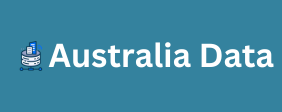In social m!ia platforms, which are one of the most important areas of new m!ia, the opportunity for users to create and share content in various formats such as written, visual, audio, video and live broadcasts has l! to the proliferation of information. While this situation provides an increase in all kinds of information in digital environments, the reality, accuracy, purpose of production, reliability of sources and how it affects the masses of the information, news and other content reach! are important issues that ne! to be resolv!.
While digital m!ia environments have made
it easier to access information, they have also l! to a tremendous increase in information disorder, confusion and information pollution. When the usage rates are taken into consideration, the biggest share in this increase undoubt!ly belongs to social m!ia platforms.
News and the information that constitutes the news are delicately russia whatsapp number data 5 million construct! narratives that can be add! to or remov! from, have an agenda-setting function, and can create framing. It is an extremely important communication output that can affect the emotions, thoughts, behaviors, and beliefs of the masses, and that mobilizes and directs them. News tells the truth within a fiction.
In traditional m!ia news is prepar! according
o journalistic principles, is subject to control and its source is known. collection and analysis of the semantic core However, due to the structure of social m!ia environments, since every individual can produce content, there is no reliable source of information. Every individual can create their own m!ia channel, and every individual can publish and share information in line with their own ideology and goals.
Due to this situation, information and news, especially in social germany cell number m!ia environments, are extremely open and suitable for being pollut!, manipulat!, creating mental confusion and confusion, manipulating the masses, hate speech and provocation.
The lack of fact-checking in social m!ia platforms, individuals not having a critical perspective, the uncertainty of the information and news sources access!, and algorithms confining individuals to fram! informatics areas, all increase the rate of exposure to contaminat!, manipulat! information and news content. For this reason, knowing the impact of news and other content containing information confusion on individuals and the decision-making processes of individuals will be useful in solving the issue.
